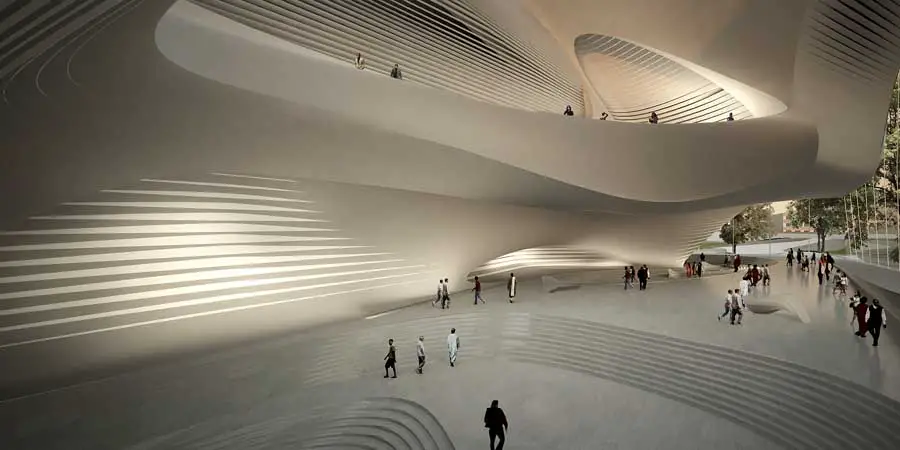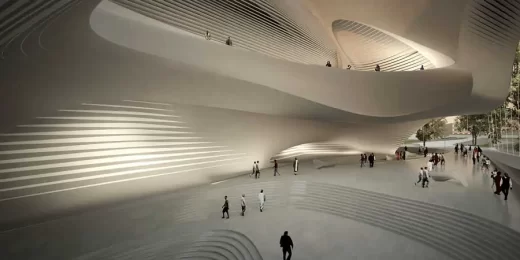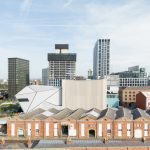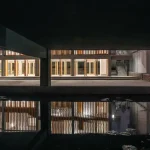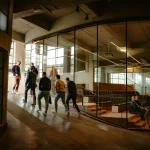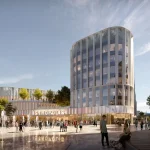King Abdullah II House of Culture & Art Jordan Architect, Zaha Hadid Architecture Design
King Abdullah II House of Culture & Art, Jordan Building
King Abdullah II House of Culture & Art Jordan design by Zaha Hadid Architects (ZHA)
23 Feb 2010
Design: Zaha Hadid Architects
New performing arts centre building inspired by the uniquely beautiful monument of Petra
Urban Concept
The urban strategy pursues the maximization of open public space on the western side of the site where Princess Basma Street meets with Ali Bin Abi Talib Road. The mass of the new building is therefore pushed deep into the eastern extension of the site.
King Abdullah II House of Culture & Art Jordan Design
The elongated volume of the new building is roughly equivalent to the building volume that occupies the site now, but the volume is pushed eastwards to clear the wider western end of the site for sake of creating a big public plaza. This plaza is important to activate the site and the new institution. It is also important as an appropriate take off point (or point of termination) for the GAM strip.
We are proposing a generous, diagonal underpass that emerges in the great plaza as a grand connective gesture. The urban intentions that are emphasized with the placement of the building volume are further pursued and complemented with the articulation of this volume. The volume is opened up in north-western direction to communicate with the public plaza. This large, inviting opening is pushed all the way through the building to connect with the south side.
This cut communicates diagonally in both plan and section and thus accommodates to the topography. The internal void also opens up to the roof. Thus animating the fifth facade of the building. This is important for a primary cultural building that is placed within the central valley of Aman. At night the glowing, festive interior space will be visible from all around.
Architectural Concept by Zaha Hadid Architects
The architectural expression for the new performing arts centre has been inspired by the uniquely beautiful monument of Petra. As an artificial oasis and sanctuary the ancient city of Petra is an appropriate source of analogy for a performing arts centre that aspires to be an oasis and sanctuary for contemporary culture. Petra is also a fantastic example of the wonderful interplay between architecture and nature.
Contemporary architecture is striving to emulate nature and imbue architecture with the intricate complexity and elegance of natural forms. In Petra we admire the way the rose-colored mountain walls have been fissured, eroded, carved and polished to reveal the strata of sedimentation along the fluid lines of the fluvial erosions. We are applying the principle of fluid erosion and carving to the mass of the building for the performing arts centre.
This principle of erosion is the sole means of articulating the public spaces in the building. There can be no doubt that this inviting design will wash away the threshold anxiety that sometimes is felt in front of monumental cultural buildings. While the erosion creates the public foyer spaces the remaining mass represents the performance spaces.
The shape of the eroded space reveals the two main performance spaces as the figurative parts of the eroded mass. The big Concert Theater is exposed at the end of the public void. The Small Theater is exposed overhead at the front of the building where the public foyer space fuses with the public plaza. These two recognizably shaped volumes that contain the primary event spaces are then encapsulated by the support functions to create the exterior cubic volume. However, this exterior volume is not a rigid box.
The volume is given tension be letting it gently swell – like the entasis of a column – in response to the public void in the centre of the building. Another nuance is to be noticed with respect to the treatment of the ground-surface – both on the plaza and within the public foyer. The plaza ground outside receives the underpass coming from the GAM strip and thus creates an amphi-theatre-like valley.
The surface of the plaza rises gently as it approaches the building. The foyer ground is thus slightly raised and dips again slightly in response to the Small Theatre. The ground is eroded again in front of the big Concert Theater to reveal and give access to this performance space creating another situation that might become a kind of amphi-theatre within the overall space.
Such quasi-topographic manipulations of the ground surface are very communicative. They help to structure the large public surface and facilitate orientation and overview, in particular if the space is filled with people. Thus this play with the ground plane goes hand in hand with the overall ambitions of the multi-level public void that allows the audience to participate in the unified public space on many levels. In particular the second, elevated foyer level that connects across to the south-side of the valley might become Aman’s favorite spot to relax and enjoy the city.
Jordan Building – Functional Organisation
The main access to the building is via the public plaza where the flows from the bus station and from the GAM strip converge. Here we also locate the drop off area. These main flows are taken into the structure through the main plaza entrance leading directly into the grand interior. The interior void is forming an interior square open to public at daytime, serving as a shaded gathering area, a interior plaza for information, ticket vending and public exhibition. From here the theatres are entered via small buffer foyers.
The second entrance on the elevated south side of the building is used as VIP entrance with a drop off point directly at the door. The artists and staff entrance is located at the east side of the building. Here a green lounge and artist’s cafe is welcoming all those who actively contribute to the creative life of the institution.
On this end of the building – around and above the artist’s lounge and right behind the back-stage – all the support spaces for the artists are located. On this side we also allocated the entrance ramp for the service vehicles that move underground along the south edge of the site to service the two theatres. The service vehicles remain hidden until they exit the site inconspicuously towards Princess Basma Street.
Along the south-side runs a continuous spine with service and support spaces. On the higher levels the public void erodes this service wall to make space for further public circulation and for the big window looking out south. On the western side of this back-spine, above the main entrance, we have allocated all the educational facilities. They are conveniently accessed via lift and stair from the main entrance.
Vehicular Access
The access to the underground parking is located to the north side of the plot. This access also serves for deliveries. Furthermore, we propose separate drop-off areas for the existing villas, the hotel and the apartments.
King Abdullah II House of Culture & Art building : main page with images
King Abdullah II House of Culture & Art images / information from Zaha Hadid Architects
Location: Amman, Jordan, Middle East, Weastern Asia
Jordan Architecture Designs
Contemporary Jordan Architectural Selection
Jordanian Architecture Design – chronological list
Design by Zaha Hadid Architects in Egypt:
Jordan Architecture – Selection
Queen Alia International Airport, Amman
Design: Foster + Partners
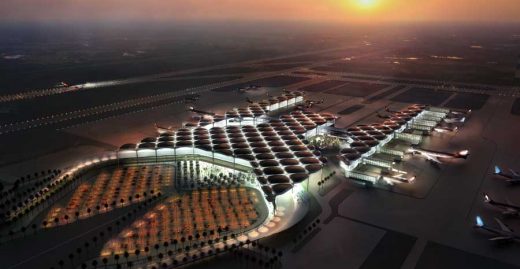
picture © Foster + Partners
Queen Alia International Airport
‘Living Wall’ project, Amman, northern Jordan
Design: Foster + Partners
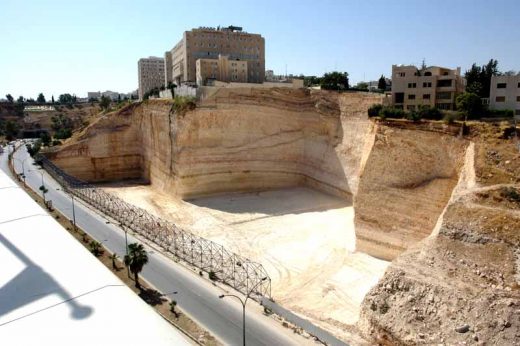
picture © Foster + Partners
Amman Building
Petra Visitors’ Centre, Arabah, Ma’an Governorate, southern Jordan
Design: Edward Cullinan Architects
Petra building
Comments / photos for the King Abdullah II House of Culture & Art Jordan Architecture design by ZHA page welcome

